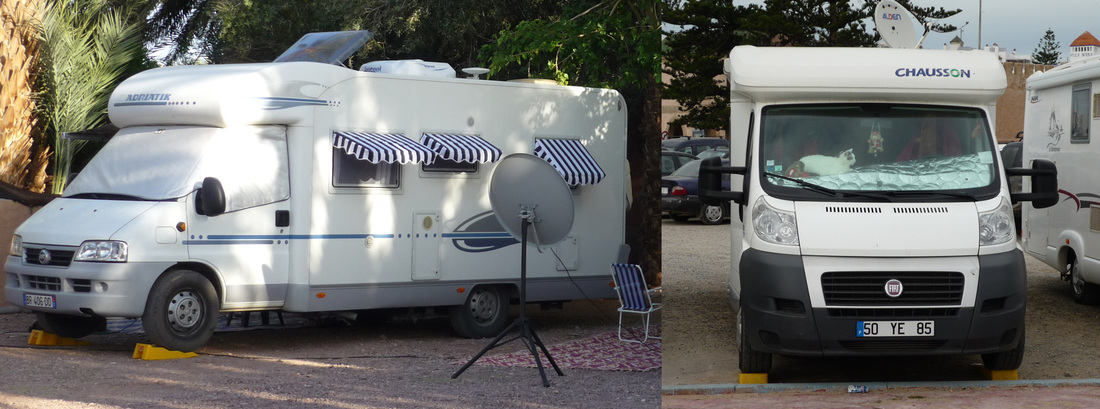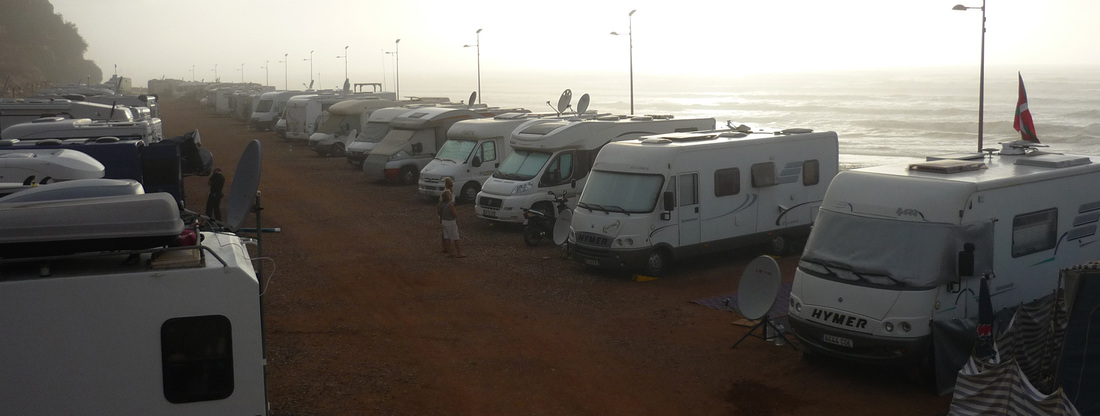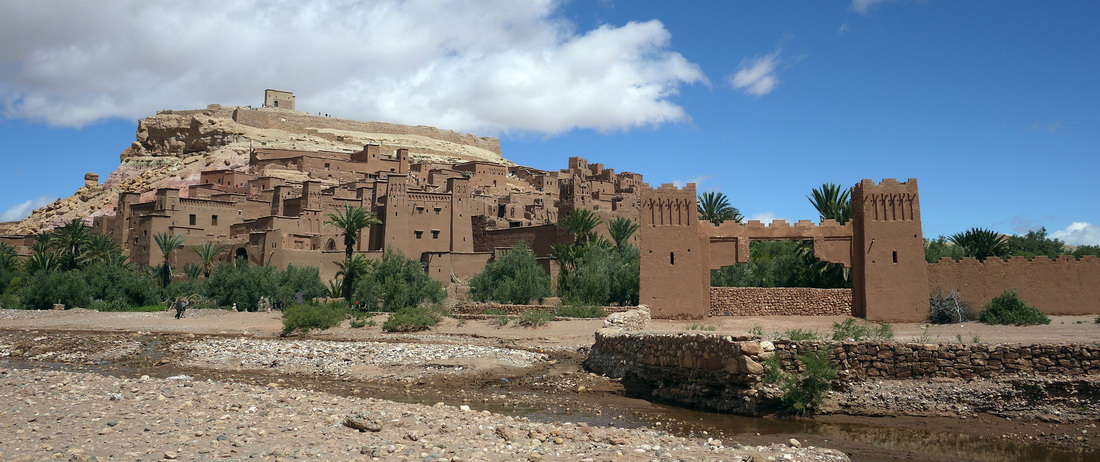|
In 1956 the French left Morocco after 44-years of occupation but recent times have seen a new invasion; from the Southern Spanish Ports they come in their thousands, a campervan cavalcade marching to a victory of sunshine and low-cost campsites. Throughout natural history, species with the means (ie-wings) have wisely selected to spend their winter months in the sunshine of North Africa, returning to the lush landscapes of Europe during the warmer summer months. This mass-migration of sleek, shiny-white motorhomes starts around December; armies of retired French couples cross the straits of Gibraltar and spread strategically across Moroccan camping grounds. Rigorous behavioural routines can be observed; departure to the next site is at 8.30am sharp, with arrival around midday for lunch. Males typically drive, with females directing the fibreglass monsters into position through a series of bizarre hand signals. Yellow plastic wheel wedges level the automobile to perfection, the satellite dish rotates into position, astroturf is rolled outside the doorway, a miniature dog appears on its lead (or even cats) and a pot plant completes the picnic table and two chairs. Territorial behaviour is intense, parking is unidirectional with an unwritten rule of personal space encroachment; an awning overstretching into a neighbours pitch will be met with fierce aggression. On one occasion we witnessed a ferocious altercation culminating in a couple spraying a hose over a man and his wife that refused to move their car from slightly blocking the communal tap. Morning sees a parade of males carrying ‘Vide cassettes’ from their on-board toilettes, followed by a mass-grooming of vehicles; vertical mopping maintains the pristine gleam while females polish the windows and hoover the 3.1m2 of interior carpet. But surely this kind of mass tourism is great for the struggling Moroccan economy? Not so much when these vehicles represent Carrefour-on-wheels; stocked to the roof with Cotes-du-Rhone and Camembert they remove the need to shop or eat at restaurants locally and hotels, buses and taxis are unnecessary when you travel in your accommodation. Behind high campsite fences on the fringes of towns, there is little integration with local communities or absorption of culture; essentially these mobile home ‘cocoons’ are miniature replicas of their French apartment equivalent (only with winter sunshine). French is Morocco’s widely-spoken second language so communication is effortless and at around 5 Euros per night, pitch fees are a fraction of European sites. Some campervans will move around the country but many take root in a single location for the entire duration of their 3 month visa. On the outskirts of Taghazout a miniature city has grown on a stretch of coastal wasteland; hundreds of campervans congregate in groups, encircling areas where Petanque is played and Christmas trees and lights dot the rough ground in December. On the flip side of the dirham is the possibility that maybe a season in North Africa is an avoidance of ridiculously high French winter fuel bills. Retired couples removed from the social circles that employment brings are possibly seeking new communal interactions. For overlanders, this influx of motorhome tourism has provided an infrastructure of convenient campsites throughout the country, yet the immaculate, meandering, camping car convoy can be escaped in minutes via any road with a slightly rough surface.
In a country that once saw transportation and movement over its deserts and mountains via a Camel Train, there now comes the Campervan Train. Emma
3 Comments
Way back in 1962, British director David Lean choose the dusty town of Ouarzazate and its surrounding area to film his epic movie ‘Lawrence of Arabia’. Lean recognised the potential of the area as a unique and versatile film location and inadvertently started the small dusty towns long love affair with Hollywood. Ouarzazate and the smaller UNESCO World Heritage site of Ait Bennadau, just 30km up the road, are the ‘go to’ locations for directors who need an authentic looking Roman or Biblical town, a set for a Gulf War epic or even a barren sci-fi landscape. It wasn’t until 1983, when Moroccan entrepreneur Mohamed Belghmi recognised the need for a permanent studio to be built. The Atlas Studio opened its doors on the outskirts of Ouarzazate, it is the largest studio in the world in terms of acreage. Alexander the Great, Babel, The Way Back, The Passion, The Mummy, The Living Daylights, Kundun, Asterix and Obelix Meet Cleopatra, The Jewel in the Nile, The Hills Have Eyes II, Sex and the City II, Time Bandits, Prince of Persia, Jesus of Nazareth, and a host of Ridley Scott films including Black Hawk Down, Gladiator, Kingdom of Heaven and Body of Lies have all been filmed in the area. Unfortunately the onslaught of CGI has left the movie industry in Ouarzazate reeling a little. The studios, despite being neglected by Hollywood, are still a popular tourist destination, in part because the 322,000 square feet of desert they occupy are littered with decaying movie sets. On the day we visited we pretty much had the place to ourselves. The last major movie to be filmed at the Atlas Film Studio was 2005’s Kingdom of Heaven, now the gargantuan scaffold, plywood, fibreglass and plaster set is weathering slowly in the middle of a great expanse of desert. The epic Egyption set from Asterix and Obelix Meet Cleopatra isn't holding out much better either! For now the studio waits patiently for the next location scout to arrive whilst hoards of tourists bumble around a health and safety inspectors nightmare. Sadly celebrity spotting in Ouarzazate is likely to be a thing of the past, like a VHS tape or ice cream intervals at the cinema!
Andy |
Archives
July 2020
Categories
All
|
Proudly powered by Weebly







 RSS Feed
RSS Feed